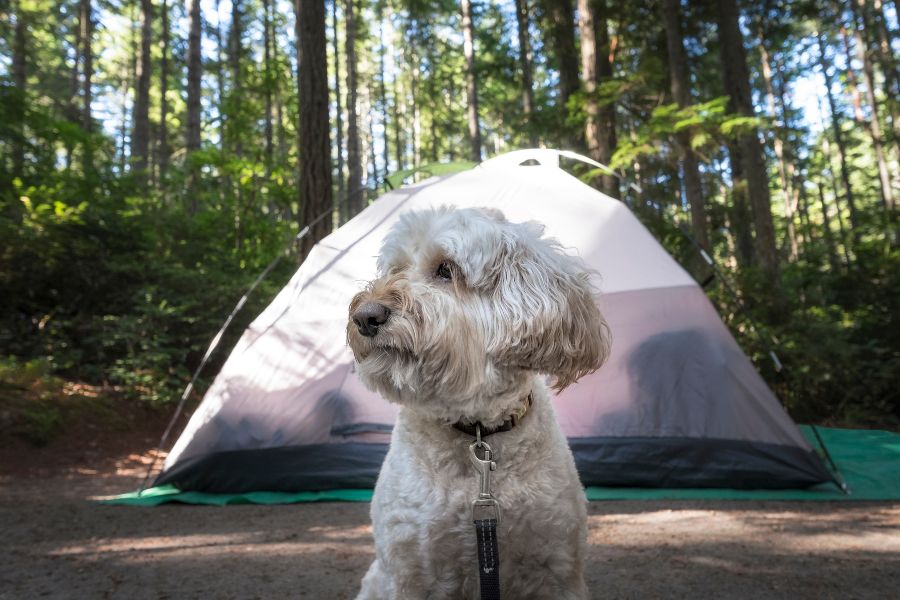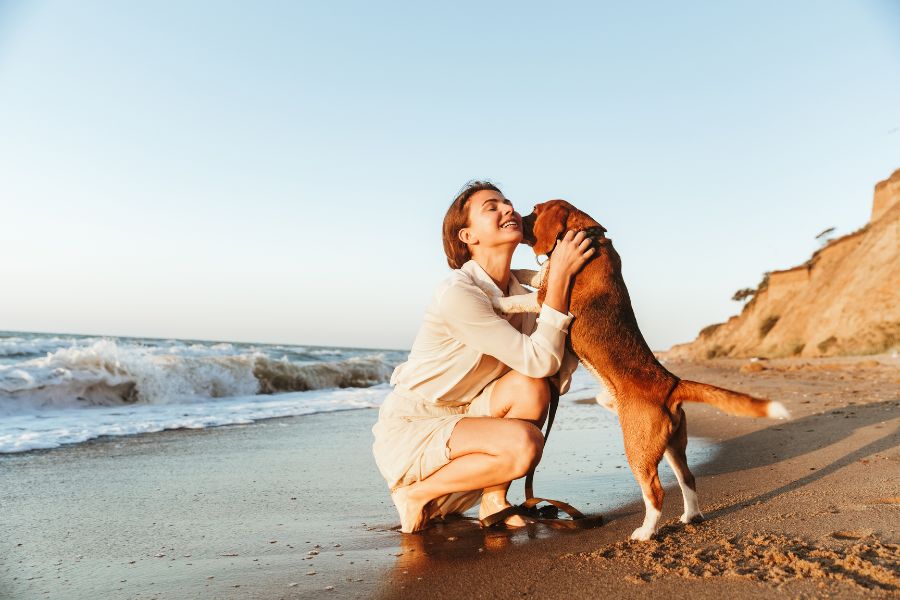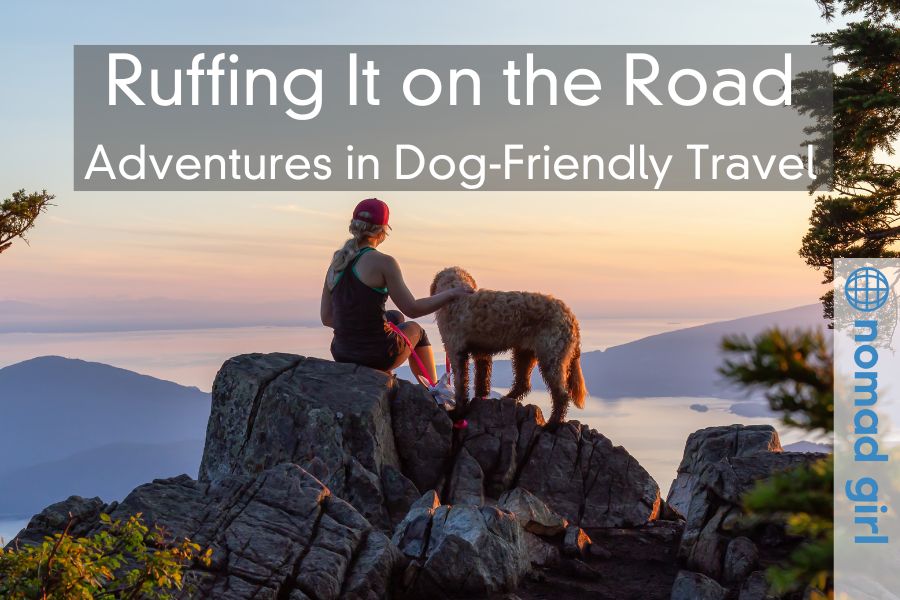Embarking on a journey with your canine companion requires careful planning and preparation to ensure a smooth and enjoyable experience for you and your pet.
One of the things to focus on is the range of activities at your destination.
Thus, this article highlights pet-friendly activities and how to make your travel stress-free and enjoyable.
Dog-friendly Adventures on Road Trips
One of the first steps in planning a dog-friendly trip is looking for places that not only allow dogs but also provide a range of amenities and activities that cater to you and your furry friend.
According to Woof Whiskers, choose destinations that suit your dog’s personality and energy level.
For example, a high-energy dog might enjoy hiking trails and open spaces, while a more relaxed dog might prefer quieter areas with fewer distractions.
The following are suitable activities when travelling with your pet:
Hiking

Embarking on a hike with your dog is one of the most rewarding adventures you can share. Many hiking trails are pet-friendly, providing ample opportunities for your dog to explore new environments, sniff out scents, and expend energy.
As listed here, destination research helps you understand the local laws and regulations, as some trails may require dogs to be on a leash, while others might have off-leash areas where your dog can roam more freely.
Nature walks offer a more leisurely pace than rigorous hikes, allowing you and your dog to enjoy the surroundings. Scenic trails often meander through forests, along rivers, or around lakes, offering plenty of visual and olfactory stimulation for your dog.
These walks are perfect for dogs of all ages and fitness levels, as they can take in the sights and smells without the intensity of a more strenuous hike. Remember to bring water and snacks for you and your dog, and take breaks to appreciate the beauty around you. Guided dog-friendly hikes are an option for those new to hiking or exploring a new area. Knowledgeable guides lead these hikes.
They explain interesting flora and fauna, share historical information about the area, and ensure the trail suits dogs. Guided hikes can also provide social opportunities for your dog, as they will be in the company of other dogs and their owners. It can enhance your dog’s socialization skills and provide a sense of community among fellow pet lovers.
Camping

One of the best parts of camping is exploring the surrounding wilderness. Dog-friendly campgrounds typically have access to trails where your dog can join you in discovering the beauty of nature. Ensure you have the right gear for your dog, including a sturdy leash, a harness, and protective booties if the terrain is rough.
Additionally, be mindful of local wildlife and ensure your dog remains under control to avoid any encounters that could be dangerous for either party.
Evenings around the campfire can be a highlight of any camping trip, and your dog can be a part of this cozy experience. While enjoying the campfire, keep your dog close by on a leash to prevent them from getting too near the flames or wandering off into the dark. Consider packing a blanket or jacket to keep them comfortable if the night gets chilly.
Beach Walks

One of the quintessential adventures in dog-friendly travel is spending a day at the beach. Many coastal areas offer designated dog-friendly beaches where your furry friend can enjoy the sun, sand, and surf. Before heading to the beach, check local regulations and ensure the beach is officially pet-friendly. Additionally, carry essentials like fresh water, a portable bowl, and sun protection.
The open spaces of a beach provide an ideal setting for playing games like fetch and frisbee with your dog. These activities stimulate your dog mentally, keeping them entertained and happy. Be mindful of other beachgoers and ensure your dog is well-behaved and under control, especially in more crowded areas.
Swimming is also a suitable low-impact way to burn off energy and stay cool in the heat. Many dogs love splashing in the waves and paddling around in the shallows. If your dog is new to swimming, start slowly and provide plenty of encouragement. Always supervise your dog while in the water to ensure their safety.
Winter Sports

Snowshoeing or cross-country skiing with your dog allows you to enjoy the beauty and tranquillity of snowy landscapes while getting a great workout. Many winter recreation areas and parks welcome dogs on their trails, offering miles of scenic routes to explore together.
When planning these activities, ensure your dog is comfortable in cold weather and equipped with appropriate gear, such as booties to protect their paws and a warm coat if needed. It’s also essential to start with shorter trips to gauge your dog’s stamina and gradually build up to longer adventures.
For a more exhilarating winter sports experience, consider dog-friendly sledding or skijoring. Many areas that offer skijoring also provide lessons or guided experiences to help beginners get started.
Many national and state parks remain open during winter and offer dog-friendly trails that wind through forests and snowy hills. These environments provide unique sensory experiences for dogs, with new scents and sights to discover. Always check the park’s regulations as some trails may have specific rules during the winter months. Additionally, ensure your dog is well-hydrated and monitor them for signs of cold stress, such as shivering or lifting their paws off the ground.
Dining

Dining with your dog can be a delightful part of the trip if you find the right pet-friendly restaurants and cafes. There are establishments with outdoor seating where dogs are welcome. Practice good etiquette for a pleasant dining experience. For instance, use a leash, ensure your pet is well-behaved and not disruptive, and clean up after it.
When dining out, consider packing snacks and meals for your pet, especially if suitable options are not readily available. Further, giving your pet regular food ensures access to familiar and nutritious options, reducing the risk of digestive issues during the trip.
Visit Pet-Friendly Museums and Attractions
Many museums, outdoor historical landmarks, and botanical gardens are becoming increasingly pet-friendly, allowing you to delve into local culture and history without leaving your furry friend behind. Some museums may even offer special tours or exhibits tailored for visitors with pets. These sites provide a rich environment where you and your dog can enjoy new experiences.
However, familiarize yourself with the specific rules of each attraction, as some may have designated pet areas or restrictions on indoor access. Always keep your dog on a leash and under control to ensure their safety and the comfort of other visitors. Further, carry waste bags and clean up after your dog.
Attend Local Events
Dog-friendly festivals, markets, and community events offer fantastic opportunities to enjoy new environments and activities with your pet. These events often feature pet-centric activities, vendors selling pet products, and spaces where dogs can interact and play. Attending such events allows you to immerse yourself in local culture while ensuring your dog has a great time.
Interaction with other dogs at these events can enhance your pet’s socialization skills and reduce anxiety around other animals. Ensure your dog is comfortable with the crowd and noise levels, providing a quiet break away from the action if needed.
Final Thoughts
When planning a dog-friendly road trip, finding activities and attractions you and your dog can enjoy is essential. For instance, you can get beaches with specific areas where dogs are allowed off-leash or national parks offering vast open spaces and trails to explore with your furry friend.
Additionally, ensure your dog’s safety and happiness by securing them properly in the car with a seat belt or travel crate, planning regular breaks for exercise and relief, and packing familiar items like their bed and toys to make them feel at home.


















